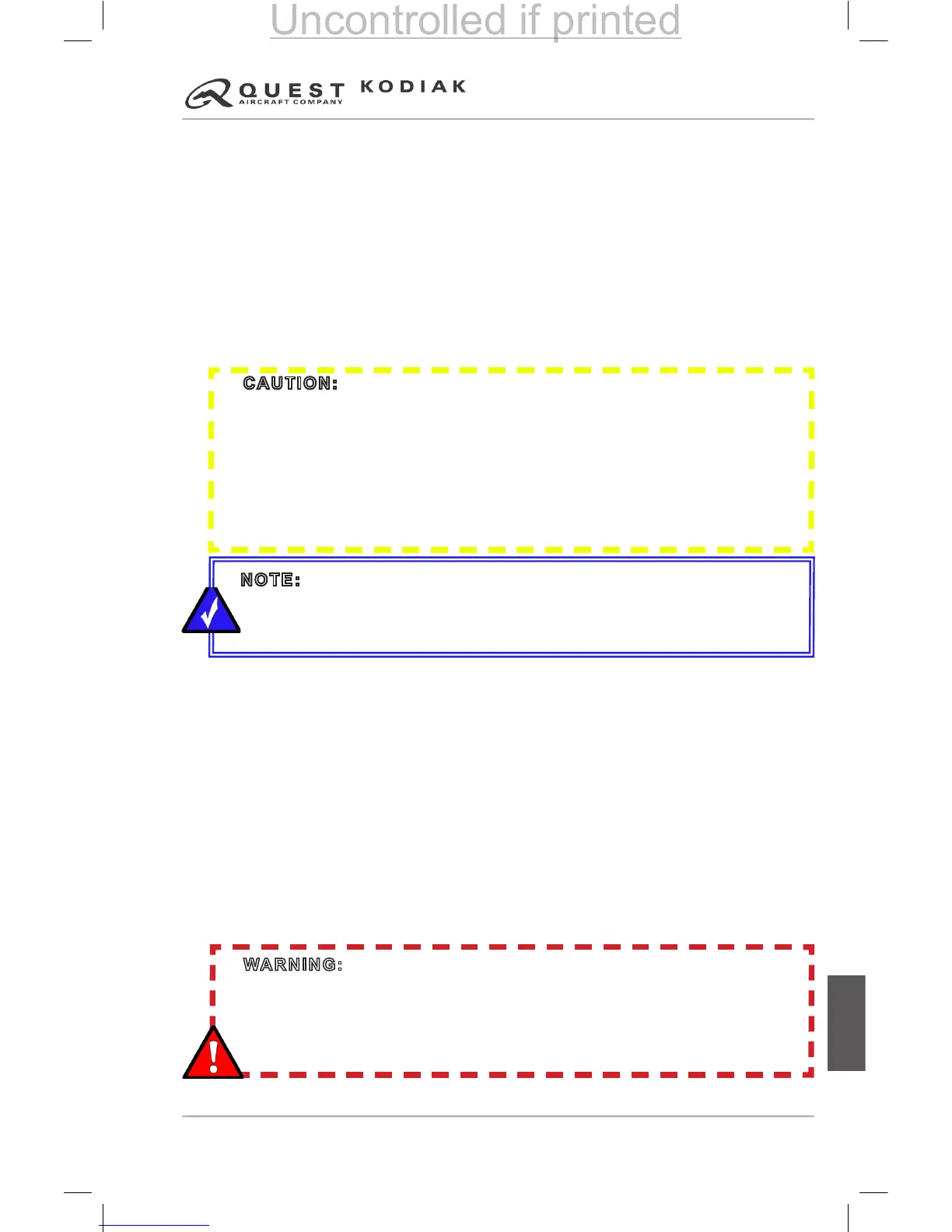Fuel Contamination
Contamination in the fuel system is usually caused by the presence of
foreign material such as water, corrosion, sand, dirt, microbes, or bacterial
growth, or by additives not compatible with fuel or fuel system components.
An additional threat of contamination has developed with the increased use
of bio-component fuels (commonly referred to as fatty acid methyl esters,
or FAME) in ground-based vehicles, since the same fuel supply lines and
shipping containers used to deliver jet fuel are typically also used for the
transport of ground based fuels. FAME fuels are distinct from traditional
ground-based fuels in that they are surface-active materials that can adhere
to pipe and tank walls, and then release from the walls into the following
product, which may be jet fuel.
Prior to each ight and following each refueling of the airplane, use a clear
fuel sampler and draw at least one fuel sampler cup full from each of the
inboard fuel tank sump drain valves, the fuel reservoir drain valve, and the
rewall-mounted fuel lter drain valve to determine if the airplane was fueled
with the proper grade of fuel or if contaminants are present.
If contamination is detected, draw fuel from all of the fuel drain points
again. Take repeated samples from all of the fuel drain points until all of the
contamination has been removed. If, after repeated sampling, evidence
of contamination still exists, the fuel tanks should be completely drained,
cleaned, and inspected. Do not y the airplane with contaminated or
unapproved fuel. Any time the rewall mounted fuel lter becomes clogged,
the red lter bypass warning button will extend. When this condition exists,
the lter must be disassembled and the lter element cleaned. Check the fuel
system to determine the cause of contamination prior to initiating ight.
WARNING: It is the responsibility of the pilot in command to ensure the
airplane’s fuel supply is clean prior to initiating ight. Any traces of solid or
liquid contaminants must be considered hazardous and properly removed
from the fuel system. Carefully sample the fuel from all of the drain
locations during each preight inspection and following every refueling of
the aircraft.
CAUTION: At high enough concentrations, FAME can impact the
thermal stability of the fuel, leading to coke deposits in the fuel system.
FAME contamination can also impact the freezing point of jet fuel resulting
in gelling of the fuel. These conditions can result in engine operability
problems, and possible engine ameout. Pratt and Whitney Canada has
agreed to accept no more than 5 ppm FAME contamination in jet fuel at
this time. Contact your fuel supplier to verify that they have implemented
quality control and inspection procedures to ensure that fuel they deliver
does not contain more than 5 ppm of FAME.
NOTE: Refer to FAA Special Airworthiness Information Bulletin
NE-09-25R1, “Fuel: Jet Fuel Containing FAME (Fatty Acid Methyl Ester,”
and to Pratt and Whitney Canada Service Information Letter No. GEN-091,
“Jet Fuel Quality,” for more information about FAME contamination.
